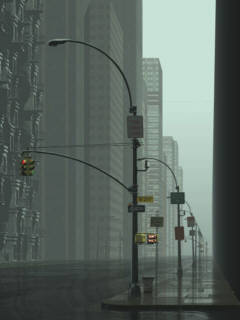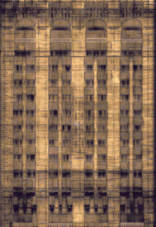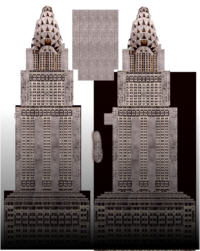Textures and dummiesThe first step was to find good textures. I knew that I wasn’t going to do it procedurally. A real wall or window structure is very complex, particularly at this scale, and using procedural textures to obtain photorealistic windows would have been a real waste of time and computer memory (I needed hundreds of them). So I took one of my favourite New York books and scanned a dozen of building facades. Every photo was corrected for the parallax, made tileable, and the colors were brightened, contrasted and saturated. Then I devised a system that let me apply a wall/window texture on a box so that the image_map is always scaled with a correct y/x ratio and by an amount related to the theoretical building size, so that all the buildings created that way can be comparable. This system was particulary used to create dummy buildings: a loop would generate 20 or so dummies, each with its randomly chosen size and image maps. On the right is an early render using the dummies (the building on the right was a dummy taken from a previous image). Of course, every dummy was to be replaced by a real model. |
|













